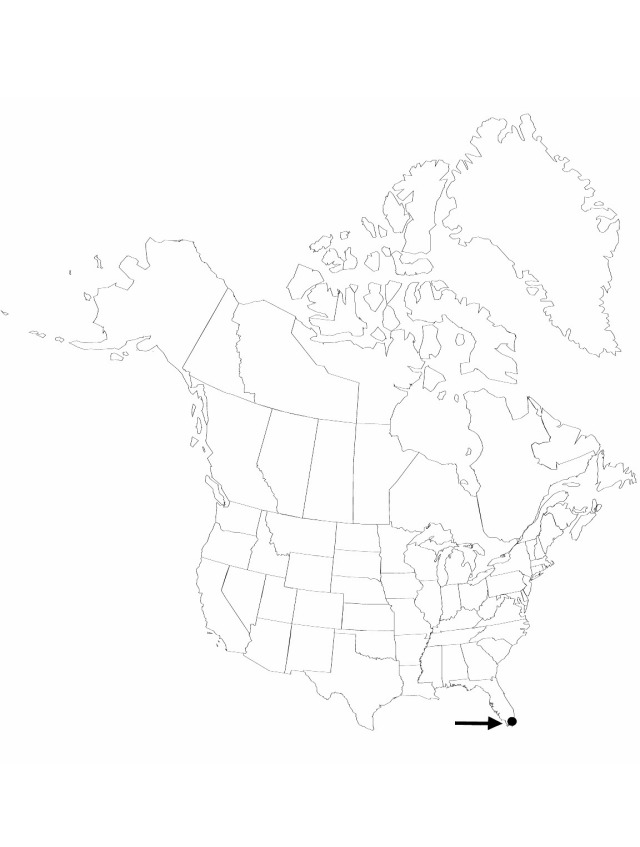Difference between revisions of "Cocos nucifera"
Sp. Pl. 2: 1188. 1753.
FNA>Volume Importer |
imported>Volume Importer |
||
| (6 intermediate revisions by 2 users not shown) | |||
| Line 8: | Line 8: | ||
}} | }} | ||
|common_names=Coconut palm;cCcocotier | |common_names=Coconut palm;cCcocotier | ||
| + | |special_status={{Treatment/ID/Special_status | ||
| + | |code=I | ||
| + | |label=Introduced | ||
| + | }}{{Treatment/ID/Special_status | ||
| + | |code=F | ||
| + | |label=Illustrated | ||
| + | }} | ||
|basionyms= | |basionyms= | ||
|synonyms= | |synonyms= | ||
| Line 24: | Line 31: | ||
|elevation=ca. 0–10 m | |elevation=ca. 0–10 m | ||
|distribution=Fla.;pantropical. native;Pacific Islands (Melanesia). | |distribution=Fla.;pantropical. native;Pacific Islands (Melanesia). | ||
| + | |introduced=true | ||
|discussion=<p>This is the coconut of commerce, although it is cultivated in the U.S. solely for its ornamental value. Although not native, the coconut persists long after cultivation and is essentially naturalized in coastal southern Florida. Lethal yellowing disease eliminated a large number of susceptible coconuts from the landscape. Presently, most cultivated individuals are resistant cultivars.</p> | |discussion=<p>This is the coconut of commerce, although it is cultivated in the U.S. solely for its ornamental value. Although not native, the coconut persists long after cultivation and is essentially naturalized in coastal southern Florida. Lethal yellowing disease eliminated a large number of susceptible coconuts from the landscape. Presently, most cultivated individuals are resistant cultivars.</p> | ||
|tables= | |tables= | ||
| Line 33: | Line 41: | ||
-->{{#Taxon: | -->{{#Taxon: | ||
name=Cocos nucifera | name=Cocos nucifera | ||
| − | |||
|authority=Linnaeus | |authority=Linnaeus | ||
|rank=species | |rank=species | ||
| Line 48: | Line 55: | ||
|publication title=Sp. Pl. | |publication title=Sp. Pl. | ||
|publication year=1753 | |publication year=1753 | ||
| − | |special status= | + | |special status=Introduced;Illustrated |
| − | |source xml=https:// | + | |source xml=https://bitbucket.org/aafc-mbb/fna-data-curation/src/2e0870ddd59836b60bcf96646a41e87ea5a5943a/coarse_grained_fna_xml/V22/V22_630.xml |
|subfamily=Arecaceae subfam. Arecoideae | |subfamily=Arecaceae subfam. Arecoideae | ||
|tribe=Arecaceae tribe Cocoeae | |tribe=Arecaceae tribe Cocoeae | ||
Latest revision as of 20:32, 5 November 2020
Stems erect or leaning, smooth. Leaves: segments inserted on rachis in 2 ranks; bract persistent, peduncular, to 1 m, woody. Staminate flowers creamy yellow, 11–13 mm. Fruits green, yellow, or bronzy red when immature, brown when mature; mesocarp dry, fibrous; endocarp brown, bearing 3 germination pores. 2n = 32.
Phenology: Flowering throughout the year.
Habitat: Coastal dune vegetation in sandy soils
Elevation: ca. 0–10 m
Distribution

Introduced; Fla., pantropical. native, Pacific Islands (Melanesia).
Discussion
This is the coconut of commerce, although it is cultivated in the U.S. solely for its ornamental value. Although not native, the coconut persists long after cultivation and is essentially naturalized in coastal southern Florida. Lethal yellowing disease eliminated a large number of susceptible coconuts from the landscape. Presently, most cultivated individuals are resistant cultivars.
Selected References
None.
